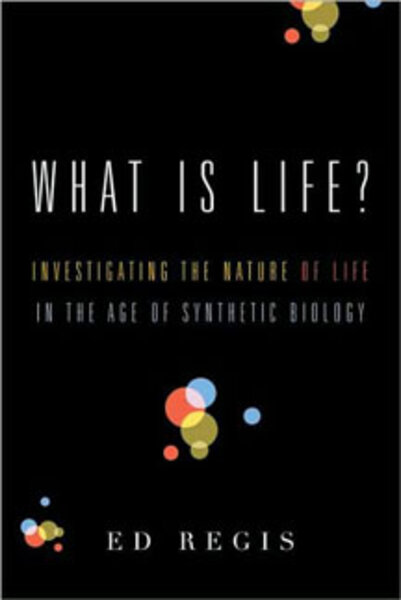What Is Life?
Loading...
“Why is there life?” may be a query best left to the cogitation of philosophers and theologians. But when asking “what is life?,” it would seem fair to turn to scientists, some of whom feel they are coming closer and closer to creating life in their laboratories.
In 1817, young Mary Shelley wrote a novel imagining a scientist named Dr. Frankenstein who assembled a monster by combining human body parts and reanimating them. It suggested that human efforts to create life were hubristic and would only end in tragedy.
But that hasn’t stopped scientists from trying. In 1771, Luigi Galvani discovered that he could make a dead frog’s leg twitch by employing an electrical current. In the 19th century, Charles Darwin speculated that the ingredients for creating life might be present in a warm pond.
In 1952 two scientists tried to create life by putting swampy stuff present on Earth before life evolved (ammonia, hydrogen, and methane) inside a closed flask and adding steam and an electrical charge (artificial lightning). They produced amino acids, a building block of biological life, but no living cells.
Today, scientists simulate life on computers. They alter existing life through genetic manipulation. But so far they haven’t created life. To get there, they’ll have to agree on another question first: What is life?
The answer to that question has proved surprisingly elusive, says veteran science writer Ed Regis in his slender, intriguing book What Is Life?
In 1944, Nobel Prize-winning quantum physicist Erwin Schrödinger published his own tiny book called “What Is Life?” that really didn’t answer the question. But Schrödinger did propose that life wasn’t mysterious and unknowable. Ordinary science could be applied to understanding it through chemistry and physics, he asserted. Life’s puzzles would yield to scientific thought and experimentation. No longer should asking fundamental questions about life be seen as “playing God.”
The essentials of life
Today some scientists talk about three necessary qualities of life. One is that such an entity must have an embodied metabolism, the ability to bring in raw materials from outside itself to create energy and nourish itself, in essence transforming nonliving matter into living matter. Another is reproduction, the ability to make more of its kind. The third is the ability over generations to evolve and change through natural selection.
Reproduction has proved the easiest target for critics, since it seems apparent that sterile creatures such as mules are alive. And no issue rules out evolutionary change, too. That leaves metabolism, even though Carl Sagan once argued that an automobile, obviously not alive, could be considered to have a metabolism: After all, it takes in fuel, produces energy, moves, and emits waste products.
Even so, “A reasonable answer to the question ‘What is life?,’ then, seems to be: an embodied metabolism,” Regis writes, “at least as adequate as any other definition of life that has been offered to date.”
But if metabolism serves as a rough definition, other thorny questions about life remain, and Regis does a skillful job of elucidating them for the layman. For one thing, he points out, understanding how life on earth works doesn’t necessarily lead to a comprehensive definition of life: Although life has developed on earth in a certain way, that doesn’t prove that it is the only way for life to exist.
How did life begin? Did it “bootstrap” itself into existence in incremental steps from ever-more-complex chemical interactions, as has been suggested?
“There is probably no more disputed problem in theoretical biology than the question of how life arose on earth,” Regis says. Or, as one top researcher puts it: “Nobody has a freakin’ clue.”
Even Francis Crick, famed as codiscoverer in 1953 of the double-helical structure of DNA, proposed seriously that “life on earth had originated in outer space and was brought here on a rocket ship” for lack of a better theory.
Crick added that “...the origin of life appears at the moment to be almost a miracle, so many are the conditions which would have had to have been satisfied to get it going.”
Why do scientists want to create life? First, it could be very profitable if entirely new cells could be programmed to do “useful tasks such as synthesizing vaccines and drugs, cleaning up toxic waste, scavenging excess CO2 from the atmosphere...,” Regis says. But more than that, he says, the problem is “technically sweet: as Robert Oppenheimer had said of building the atomic bomb, ‘so tempting as to be almost irresistible.’ ”
A code as the basis of life?
Peering inside the gene has already caused scientists to rethink the basis of life. They’re finding that life is “information, stored and expressed in the form of specific groupings of atoms,” Regis says.
Scientists weren’t ready to think about life that way. “Even today, the idea that the basis of life is a code, a language, is a radical, almost fantastic, notion,” he says.






